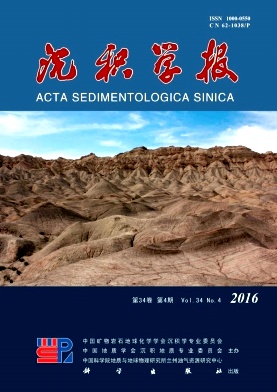The Spatial Distribution Difference of Surface Elements in the River-desert Transition Zone of Three Drainages in Northern China
doi: 10.14027/j.cnki.cjxb.2016.04.001
- Received Date: 2015-09-14
- Rev Recd Date: 2015-12-24
- Publish Date: 2016-08-10
-
Key words:
- Geochemical elements /
- spatial distribution /
- factor analysis /
- river-desert transition zone
Abstract: As the geochemical characteristics of surface sediments usually recorded the information of the sediments, such as the transport medium and sedimentation process, analyses of their mineral composition and provenance can provide valuable indications for paleoenvironmental reconstruction. This study provides factor analyses of 7 major dioxides and 15 micro elements in the surface sediments taken from the river-desert transition zones in the Keriya River, Mu Bulag River, and Xi Xar Moron River basins. It was found that the common factors derived from the factor analyses among the three river basins or their upper, middle, and lower reaches mainly included stable Fe and Mn minerals, less stable feldspars, calcite (dolomite) and other silicate minerals, and stable rare earth elements and heavy minerals. The factor analysis of the relationships between the rivers indicated that the surface sediments along the rivers from west to east showed progressively increasing abundance and movement of chemical elements and degrees of chemical weathering. The factor analyses at a river basin scale indicated that from the upper reaches to the lower reaches, samples exhibiting increasingly complex chemical compositions. The spatial distribution patterns of the chemical elements in the surface sediments from different river sections or different river banks showed correlations with their provenance, geomorphic pattern, water conditions, and other factors. From the riverbed to the river terrace, the surface sediments on the three geomorphic units, from riverbed-flood plain, low river terrace composed of sand dunes to the high terrace, exhibited heterogeneous, progressive variations in their chemical compositions. This may result from their varying distances from the river courses, provenances and dynamic factors. The preliminary results of the study are expected to provide references for research into the chemical composition characteristics of surface sediments in river-desert transition zones and their variation mechanisms in response to changes of aeolian-fluvial interactions.
| Citation: | LI XiaoMei, YAN Ping, WU Wei, QIAN Yao. The Spatial Distribution Difference of Surface Elements in the River-desert Transition Zone of Three Drainages in Northern China[J]. Acta Sedimentologica Sinica, 2016, 34(4): 615-625. doi: 10.14027/j.cnki.cjxb.2016.04.001 |






 DownLoad:
DownLoad: